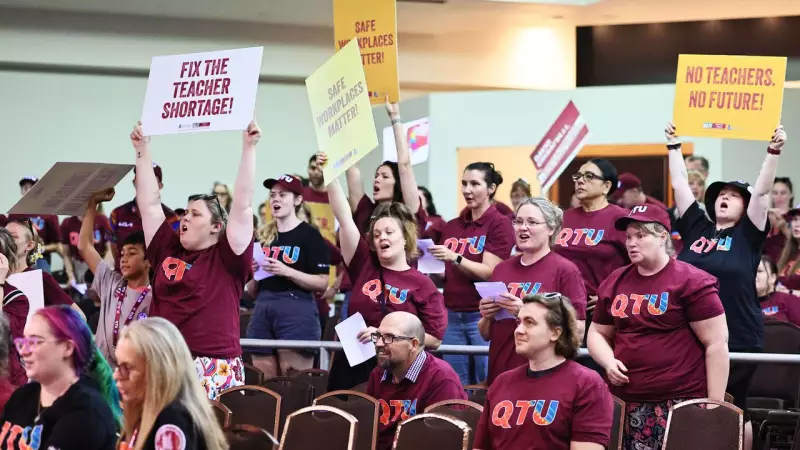
Thousands of educators across Far North Queensland have joined a massive statewide strike today, walking off the job to demand better pay, reduced workloads, and improved conditions amid growing teacher shortages.
Statewide Walkout Disrupts Schools
More than 50,000 teachers and school staff across Queensland participated in the industrial action, making it one of the largest education strikes in recent state history. The strike led to widespread school closures and disrupted learning for countless students as educators took their concerns directly to the public.
The Queensland Teachers' Union organized the 24-hour stoppage after failed negotiations with the state government over a new enterprise bargaining agreement. Union representatives argue that current offers don't adequately address the crisis facing the education sector.
Far North Queensland Schools Affected
Across the Cairns region and throughout Far North Queensland, numerous schools either closed completely or operated with minimal supervision. Parents received advance notice of the disruptions, with many making alternative childcare arrangements for the day.
At rally points in Cairns, teachers gathered with signs and banners bearing messages about their struggle for better resources and working conditions. Many educators expressed concern that without immediate action, the quality of education in regional areas would continue to decline.
"We're seeing teachers leave the profession in droves because the workload has become unsustainable," said one Far North Queensland primary school teacher who asked not to be named. "Class sizes keep growing, paperwork keeps increasing, and we're not seeing the support we need to do our jobs properly."
Key Demands and Government Response
The striking teachers have presented several core demands to the state government, including:
- Reduced face-to-face teaching hours to allow for more planning time
- Additional support for students with complex needs
- Better pay that reflects their qualifications and workload
- Measures to address the growing teacher shortage crisis
Education Minister Grace Grace acknowledged the concerns raised by teachers but expressed disappointment at the strike action. The government has offered a 2.5% annual pay increase, which union representatives argue falls short of addressing inflation and the current cost of living pressures.
The minister stated that negotiations would continue despite the industrial action, emphasizing the government's commitment to reaching a fair agreement. However, she also noted the need to balance teacher demands with budgetary constraints.
Meanwhile, Opposition education spokesperson Dr. Christian Rowan criticized the government's handling of the situation, arguing that the strike could have been avoided with better planning and more meaningful engagement with the education sector.
Broader Impact on Regional Education
The strike highlights deeper issues within Queensland's education system, particularly in regional areas like Far North Queensland where teacher recruitment and retention have become increasingly challenging.
Many schools in remote communities already operate with staffing shortages, requiring existing teachers to take on additional responsibilities and larger class sizes. The union argues that without competitive salaries and improved working conditions, attracting qualified educators to regional postings will become even more difficult.
Parents and community members have expressed mixed reactions to the strike, with some voicing support for the teachers' cause while others expressed frustration at the disruption to their children's education.
As the strike concludes, attention now turns back to the negotiation table where union representatives and government officials will resume discussions. The outcome of these talks will determine whether further industrial action becomes necessary or if a resolution can be reached that satisfies both parties.
For now, Far North Queensland teachers have returned to their classrooms, but the underlying issues that prompted today's widespread action remain unresolved, leaving the future of education in the region hanging in the balance.





